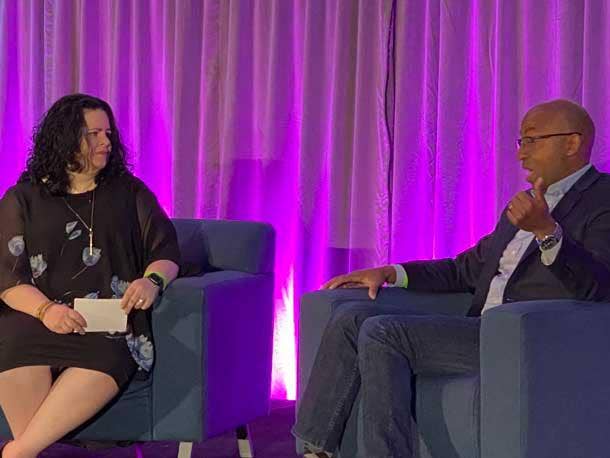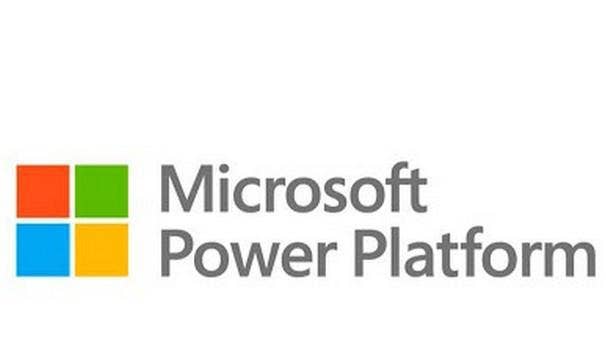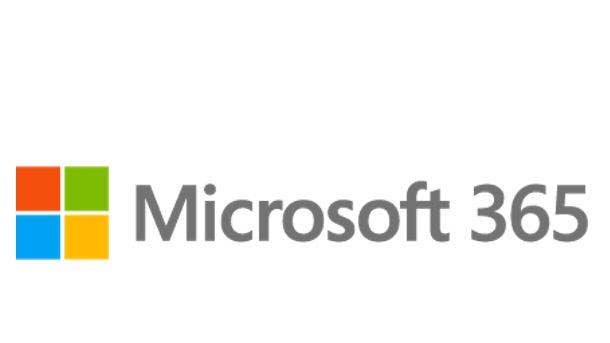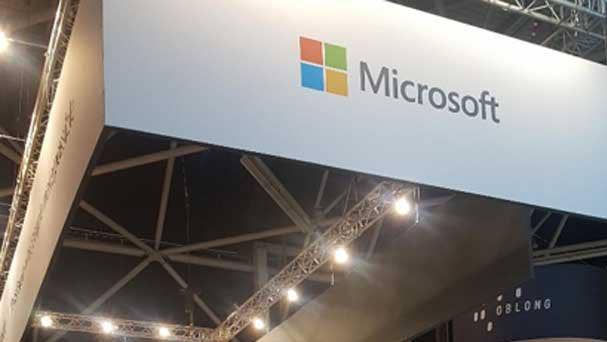Microsoft Channel Chief Rodney Clark’s Boldest Statements From XChange 2022
“The whole thought premise, then and now, is to simplify and make it easier for our customers to engage, to simplify and make it easier for our partners to bring value to customers,” Channel Chief Rodney Clark says.

A 14-day extension on invoice pricing for certain Microsoft 365 plans, a Microsoft credit organization that is available to help partners in certain situations that involve a customer carrying a lot of risk and a call to action for partners to invest in security tools were among the biggest statements from Microsoft Channel Chief Rodney Clark during a talk at CRN parent The Channel Company’s XChange 2022 event.
Clark — whose formal title is Microsoft corporate vice president of channel sales and channel chief – took the stage at XChange to answer questions on Microsoft’s controversial New Commerce Experience platform and price increases for popular packages including Microsoft 365 – which includes Word, Excel, PowerPoint and collaboration application Teams – Microsoft’s investment in security tools and the company’s efforts to support more women, people of color and other underrepresented communities in the channel.
“The whole thought premise, then and now, is to simplify and make it easier for our customers to engage, to simplify and make it easier for our partners to bring value to customers,” Clark told attendees.
[RELATED: Channel Chief Rodney Clark Defends Microsoft 365 Licensing Model]
CRN Executive Editor Jennifer Follett asked Clark questions on stage before allowing audience members to ask questions. XChange 2022 was held in person this week in Grapevine, Texas.
Here’s what you need to know from Clark’s talk.

On NCE
It’s an investment that Microsoft has made, and it’s a multi-year investment. It’s not a point-in-time investment, which is, I think, important to remember and it’s a good framing for context here.
NCE is similar to something some of you may be familiar with called “modern commerce.” It’s been talked about for years. In 2019, we actually made our first push into modern commerce, now called New Commerce Experience.
And the whole thought premise, then and now, is to simplify and make it easier for our customers to engage, to simplify and make it easier for our partners to bring value to customers.
And so in 2019, we saw Azure Reserved Instances. We saw Azure Subscriptions enter into the commerce experience.
The reason we’re talking about it now and the reason why it’s top of mind for everyone is because in January of this year, we moved basically the core of our business into this commerce experience, which was Modern Work, Dynamics 365, Power Plat(form).
And so it really hit on the core of how we all do business. And it really required all of us to finally make that move and transition to something that we had been focused on for quite some time. … We’ve gone from 20 licensing constructs over time down to just three. New Commerce basically enables that.
We’ve got a breadth motion in CSP, we’ve got an enterprise motion and our enterprise licensing agreements and we have a direct motion.
We’ve gone from multiple back-end engineering systems to one. And ultimately what that does in New Commerce is it brings capability of managing multiple agreements at a time, adding seats and subscriptions. And this is to you all as partners. And so all of these things, it’s hard to break through the noise. And it’s easy for me to sit here and say, ‘Oh, of course it’s a value to every single person in the room,’ when every single one of our partners in their business is a little different.

On NCE Helping Partners Make Money
The make money portion is an efficiency statement today. To make money over time is a business model opportunity for each and every partner.
The core of it is we know that it’s been an investment in technical, it’s been an investment in business model a change in some policies.
The way that you have to rationalize the ROI (return on investment) today. And this is not an edict or me pushing it down. It’s bringing more efficiency. talked to partners last night – this notion of bulk migration, it’s saving them time. So they have to move and migrate all of their legacy agreements or all of their existing customers into NCE, they get things they would have never been able to do before. They can manage license counts. Everything is there and available in Partner Center. That’s an efficiency statement today.
Over time, it becomes more of, what additional services can I now – with this time that we’ve saved in managing operational complexities – what can I go out and build on top of in terms of solution capabilities? … With a four-wheel drive, you can’t change just one tire if something goes wrong. You have to change all four.
You go in and you make the investment and you’re like, ‘Oh my gosh, I can’t believe I’m going to spend $2,500 on a set of tires when I only need one.’ It’s bringing more efficiency. It’s saving me time from having to go back in to do new wheel alignment or brakes. This is the NCE investment. … I liken it to that. There’s an efficiency gained today and ultimately we will realize additional profitability down the road.

On The Message To Partners Concerned About Premium On Monthly Contracts
The partner has the ultimate choice in, ultimately, where the customer ends up.
What you just described is that we have introduced monthly terms. That’s not to suggest that you cannot sign a customer up to an annual agreement and enforce monthly payment.
What we’ve done is in essence created more flexible licensing opportunities and choice. We have an annual term, we have a multi-year term. A lot of customers like that and appreciate it – specifically larger customers, by the way, who know what their overall IT environment is going to be two years down the road. They know what the number of users is going to be.
That’s a choice that you have to make as a partner. Their credit risk. Is there zero risk in signing someone up to an annual or multi-year agreement when their business is highly volatile? And that’s where the monthly option comes in and creates a flexibility.
Where I’m hearing the angst is the premium, the 20 percent. And it’s a consistent model that the industry leverages for subscription models. I just signed up for an application to do workouts on the road. … But I had to pay for it. Because I’m like,’ I don’t know if I want 12 months of this experience. Let’s try it for a month.’
The 12-month was $20. The one-month was $5. We live in a world today where that’s our reality for any subscription service.
Our change and shift to NCE and bringing that type of term to the market was us also – not only industry standard – but getting consistent with things like web direct and other businesses that we have inside of Microsoft, by the way, that this new commerce experience supports.

On Microsoft 365 Pricing
The Microsoft 365 price increase was something that was long overdue. And when I say that, this is a shareholder, Wall Street statement. Ten years of continuous improvement, more than 24 core adds added to the experience. Over 1,400 feature capability enhancements over time.
Just look at Teams by itself. We had over 300 product enhancements and user enhancements. So we were getting a strong signal and message that there was more value there.
Again, not a huge significance for large customers who engage in that every day. The 10-to-15 percent change or delta for small businesses is pretty significant.
Independent of NCE, by the way – I want to separate these two things – as a company we said, ‘Hey, we are delivering more value. We haven’t done any price increase in 10 years. So let’s raise it. I can’t comment on the Google price increase. We always look at the value we deliver and then also how we enable our ecosystem to also deliver on the value.

On What Incentives Are Built Into NCE To Encourage Partners To Sell The Full Solution Stack
This is why we have brought these new capabilities you see as seat-based offers into CSP (Microsoft‘s Cloud Solution Provider partner program, which includes managed service providers as well as distributors) because that’s how our customers are buying it.
That is how our customers are saying over these last couple of years that they want to manage their IT. They want to manage their technology. Customers, they’re driving the innovation for the industry right now. It used to be the other way around, where we go in and we basically would – as a company, as Microsoft, and us as an ecosystem – have the primary push and say in terms of, hey, here’s the core capability that we think you need.
And it’s kind of turning a little bit to where customers are saying, ‘This is ultimately what we want this to look like.’
And so for us, it’s like, how do we support our ecosystem on building the solution capability that our customers are wanting and needing? How are we supporting our ecosystem in building out additional services capabilities so that you can make dollars in margin on top of the solutions that you sell? And then how are we enabling you to partner with others in the ecosystem, because that’s a big part of it as well.
You might be invested in Azure and infrastructure. But to meet the customer need, you need Power Plat(form) and Dynamics. And who is that partner that you can work with to help you? Well, they are sitting right next to you at the table. And so we are investing to enable our partners to really harness the connection, the relationship and also ride the wave of the investments that we’re making.

On What Microsoft Is Doing To Help MSPs Stay More Secure
Security is huge, a massive investment for us.
If you follow the last two earnings reports, and you follow some of the investments we’re making, we’ve pledged to invest more than $50 billion in this space over the next several years. … And that is the ability to manage and secure cloud environments across not only Azure but AWS and GCP. Those are the types of investments that we’re making. We’re going to continue to invest in things like Azure for Defender, we’re going to continue to invest in Sentinel. We’re going to continue to invest in that edge-to-cloud security, securing the device, as well as the cloud.
And so we have made significant investments in leadership, both from an engineering standpoint as well as from a product management standpoint to come in and bring the best of the industry into Microsoft.
We live in an expanded landscape. The surface area has just gotten so large in terms of what is a security threat. It’s not a matter of if it’s a matter of when. We all know that.
The thing that we are also encouraging all of our ecosystem to do is not only the concern … about your businesses, but many of you run IT of your customers and you have … privileges where you go in and sign on and sign in as a customer in order to enable cloud transactions, Azure transactions.
We want to encourage not only you but your customers to leverage things like multifactor authentication, MFA, and some of the other things that we publish and make available to the ecosystem.
In fact, we’re providing incentives for partners to actually go in, ensure that they have things like multifactor authentication.

On The Biggest Challenge That MSPs Face
I call it an opportunity as opposed to a challenge. That’s on both sides.
It’s an opportunity for Microsoft to lean in and help those that are large and small.
And then it’s an opportunity for the MSPs to decide how they want to stay current and provide customer value.
For us, it’s listening. And I’m going to add to make a great example and an announcement today. This is not so much MSP but it’s just across our ecosystem.
My job is to listen. I get paid by the nature of and to the extent that I support our ecosystem. That’s what the channel chief tag is all about.
I work for Microsoft. And I always have to balance the voice of our broad ecosystem as well as the voice of Microsoft. It’s a really interesting job. I love it.
At times the feedback is rich enough that it causes us to act. And in the case of Microsoft in terms of how we can help, it’s my job to say, ‘OK, what’s in the best interest of our channel, and at the same time, the best interest of the broader industry. And then the third, in the best interest of Microsoft.
We had Modern Work price increases that were going to happen on March 1. We have NCE, a new way of engaging from a licensing perspective. We had 10x the volume of orders in the last week of February than any partner – this is a general statement – was accustomed to managing.
It caused a considerable amount of concern because they were like, ‘Hey, if I don’t get this thing in on March 1, it was going to add expense because they’re having to process it.’
So I made a decision with three other leaders across the company to extend that 14 days to give the partners an opportunity to transact and engage. That’s one example.
October was the original date for NCE. We looked at that and said, ‘Hey, what’s happening? Can the average indirect provider accommodate this change? Are we ready? Are we truly ready?
I made a decision to move it to January. That’s acting on behalf of the channel.
And then for our MSPs, our job as large companies – in this case, Microsoft, but I would imagine it’s the same at AWS and Google – we try to signal changes as early in the cycle as possible.
NCE, we signaled 12 months ago. We said, ‘Hey, this is coming.’
When you hear that, you have to take action. You have to decide and determine whether or not it’s worth the ROI. Push us to give you the ROI as opposed to waiting. In this case, we waited.
We waited, we didn’t push, and we didn’t act. Aand so when I came into the role – the previous November we had announced it – but we didn’t have many of our partners that had taken that action.
And so the whole point in our relationship is to signal these big changes as early as possible. And for you, I say dig in earlier. And you have the team and the resource to help determine. We have the listing mechanism in place. And then you have the team and the folks that help us get there.

On Where Partners Should Put Their Investments To Drive Growth
The growth is across our solution areas. When you look at how our customers are buying and what Microsoft is doing to support its own growth, it’s across solution area and it’s across industry. So it’s data and AI. … It’s security that we talk about. It’s Modern Work that we talk about. It’s Dynamics.
You have to invest and build your capability there and align with us. That’s how we are investing and building our own capability. It’s how we’re investing in incentives. It’s how we are talking to customers.
If I go back to Inspire, I talked about advanced specialization. And I talked about the 250 percent investment that we’re making in skilling.
That’s to build up capability that allows all of us to invest and anchor in the solution areas.
There is a stat that I look at every day. I sit on a lot of information. I have a dashboard that I look at, and I see what’s happening with the growth of our industry.
Cloud growth is roughly 40, 45 percent in general across all.
And for the most part, our ecosystem, broadly, our Microsoft ecosystem is growing at the same.
But then I have a subset of partners who are growing at one-and-a-half times that.
And they’ve invested in solution areas in advanced specialization. They are more digital than their peers. So they’re leveraging marketplace – either their own or Microsoft’s or one of our large indirects.
They’re engaging in partner-to-partner more so than anyone. And as a result, they’re seeing more activity in things like co-sale.

On Diversity, Equity and Inclusion
Let me give you a stat first. And forgive me if this is a bit off putting for some of you. But it’s the reality.
Nineteen, two and one. What is that? Every meeting that I go into, be it internally or externally, I count the number of the people in the room.
A little different now because of Teams and virtual. I count the number of people, I count the number of females and I count the number of brown faces in the room. Nineteen, two and one is the average for the meetings that I’m in in settings like this or large forums internally.
Nineteen people. Two female. One person of color. You ask what you can do to help, this is where representation matters.
It’s not just representation. But it’s this notion of inclusion. If that’s the room for all of us, who’s taking all the great work? Who’s growing and developing as a result of that meeting that we just had together between Microsoft and your company, or Microsoft and XChange and Microsoft and any company.
So the work that we need to do together is first be comfortable with the conversation. That stat may not faze any of you. But if we look at the world that we live in – and my job is a global one, and I look at the customer base that we serve. And I look at the growth that we have, it definitely doesn’t reflect nineteen, two and one. It looks a lot different. It looks a lot more diverse.
And my job as a leader is as I go around and talk about this concept of diversity and inclusion is to not just throw out stats like that but to help all of us with the tools and the resources to help us get there.
We have an investment inside of Microsoft – and it’s something that I’ve accelerated since coming on board – where we engage with women in cloud and women in tech. And we support growth of companies and businesses that are diverse.
We’ve just recently also created the Black Partner Growth Initiative. I’ve put in dedicated, full-time people on these things. So they’re not just programs. They are there to help each of you build and develop the women within your organization, to help each of you build and connect with black, African-American-owned partners in your ecosystem. To help each of you build your own version of diversity and inclusion. And so those are some of the investments that we’ve made.

On The Reality Of The Job
I call it a destination role. I’ve been at Microsoft for 24-plus years … and for at least 15 of those years I’ve worked adjacent to the leaders that have had this role as a peer.
And I’ve seen the power of our channel, the contribution that our channel makes to our commercial business. Ninety-five-plus percent of our business flows through all of you and our broad ecosystem.
I see the impact that we make through our ecosystem on a global basis. The jobs that we support, the communities that we serve.
I see the company, Microsoft, getting better every single day – and I’ve seen this over the last 15 plus or minus years – getting better by virtue of the signal and the feedback that’s coming in, and how you all as businesses are directing our future.
And as I looked across jobs in the company, I’m like, ‘This is the ultimate platform.’ This is an opportunity to change the way that we do business on a global basis. To simplify. To bring value … to take on other important and core initiatives like diversity and inclusion.
And so it really is one of these roles that allows me to exercise the geek in me. It allows me to exercise the CFO in me. It allows me to exercise this concept of connecting with people. And there is no other role in Microsoft in my opinion – or, quite frankly, in the channel – that allows the breadth of experience and enrichment. So it is an absolute dream job.